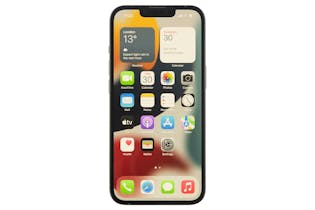Wireless phone chargers: Should you cut the cord?
Wireless charging is the future but for now, speed is limited and prices are reasonably high.

We live in a sci-fi world where we don’t need to plug in a phone to charge its battery. But wireless chargers are no miracle technology (they’re slow, for a start). So do they make sense for you?
Charging a device wirelessly via electromagnetic induction is pretty normal. Electric toothbrushes have done it for decades, and many fitness trackers use it. Today, most smartphones sold for more than about $800 are capable of wireless charging too.
Wireless chargers usually take the form of a flat surface the phone rests on. The charging tech used by most phones is called Qi (pronounced “chee”). You can use any Qi charger with any Qi-compatible phone, so you don’t need to stick with the same brand. However, a few manufacturers offer special products that charge their own phones faster, such as Oppo’s AirVOOC charger.

Great for convenience, not great for speed
Wireless charging is painless. With no physical port, it’s easier to pick up your phone while it’s charging, send a message or check a notification, and put it back. Or, with a charging stand, you don’t need to pick it up at all.
The trade-off is speed. Induction charging isn’t very efficient – it uses roughly 50% more energy, which gets lost as heat. That means a 5W wireless charger will take 50% longer than a standard 5W charger.
Also, wired chargers tend to have higher wattages to begin with. Be aware that an extremely thick phone case – such as a leather, wallet-style one – can disrupt wireless charging, slowing it further.
We bought two 10W wireless chargers – one from a leading brand, the other cheap and generic. Both took about five hours to charge my phone from 20% to 100%. Admittedly, my phone has a huge 5000mAh capacity so yours may be faster.
Both chargers were stands, which have a couple of advantages over charging pads, the other common form factor.
- You can easily use the phone while it’s charging. Angle the stand towards you and it presents the screen in a usable way, with no need to crane your neck.
- It’s easier to line up the charging coils. It’s crucial your phone is positioned in exactly the right spot, or it’ll charge slower. A stand ensures correct vertical alignment at least, provided your phone isn’t unusually tall or short. Another solution is to embed magnets in the charger to snap your phone in place, as demonstrated by Apple’s MagSafe accessories.
The verdict
Belkin Boost Up Charge 10W Stand - $69

With a quirky design and bold packaging, this charger is clearly intended to grab attention on store shelves.
The Belkin comes with an 88-page manual covering international warranty, safety information and operating instructions in 19 languages. It warns to only use a wall adaptor with 18W or more of power, and to place your phone in the centre of the stand.
The design of the Belkin is such that your phone can rest either vertically or horizontally. You could charge your phone while watching TV in landscape, if you wanted.
Also included is an attachment to improve fit for smaller phones, such as the iPhone 13 mini.
Quick Charge 10W Wireless Charger - $20

I frankly don’t know what this product is called. I’ll refer to it as ‘Quick Charge’ because that’s stamped not once, not twice, but three times on its box. But confusingly enough, the charger itself has ‘FASTCHARGE’ scrawled on the front. Who knows?
The design couldn’t be much simpler. My colleagues compared the box to a prescription medicine from a pharmacy, or a replacement oil filter. The manual is extremely brief, at 130 words, and includes the lovely assurance that the charger “can bring you with limitless life experience as well as safe and free experience”.
Still, I can’t see much downside to buying this charger over the Belkin. My phone charged in the same length of time, which I’d expect – wattage is the important thing, regardless of brand (or in this case, lack of brand). The risk is that you can’t verify how well the electrics have been tested.
It may also be harder to exercise your consumer rights for a product like this, though that mostly depends on which store you buy from. We got the Quick Charge from Mighty Ape, an online retailer in Auckland. If something went wrong, Mighty Ape would be required to help.
Wait until wattage goes up or price comes down
In my opinion, wireless charging isn’t ready for primetime yet. It’s more expensive than standard charging and tends to be slower. Qi chargers have become more efficient at higher wattages, as manufacturers figure out how to channel more power safely. But wired chargers are improving at the same time, so they’re still better in most cases.
However, there are some situations in which wireless makes sense – for example, I’ve heard that the chargers built into new cars are very handy when paired with wireless Android Auto or Apple CarPlay.
Give it a few years and I’ll bet this technology will be fast and cheap enough that we can all benefit from the extra convenience. The question is where that tipping point is for you.
If you do want to try it out, make sure the wattage is high enough to match your phone’s capacity. I really found 10W too low for my premium phone and ended up using my wired fast charger more often than not.
We've tested 171 mobile phones.
Find the right one for you.
Apple



Member comments
Get access to comment